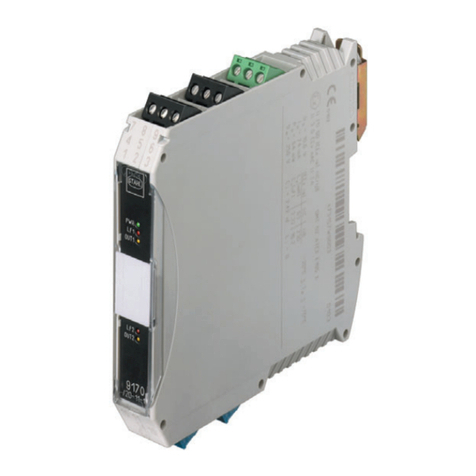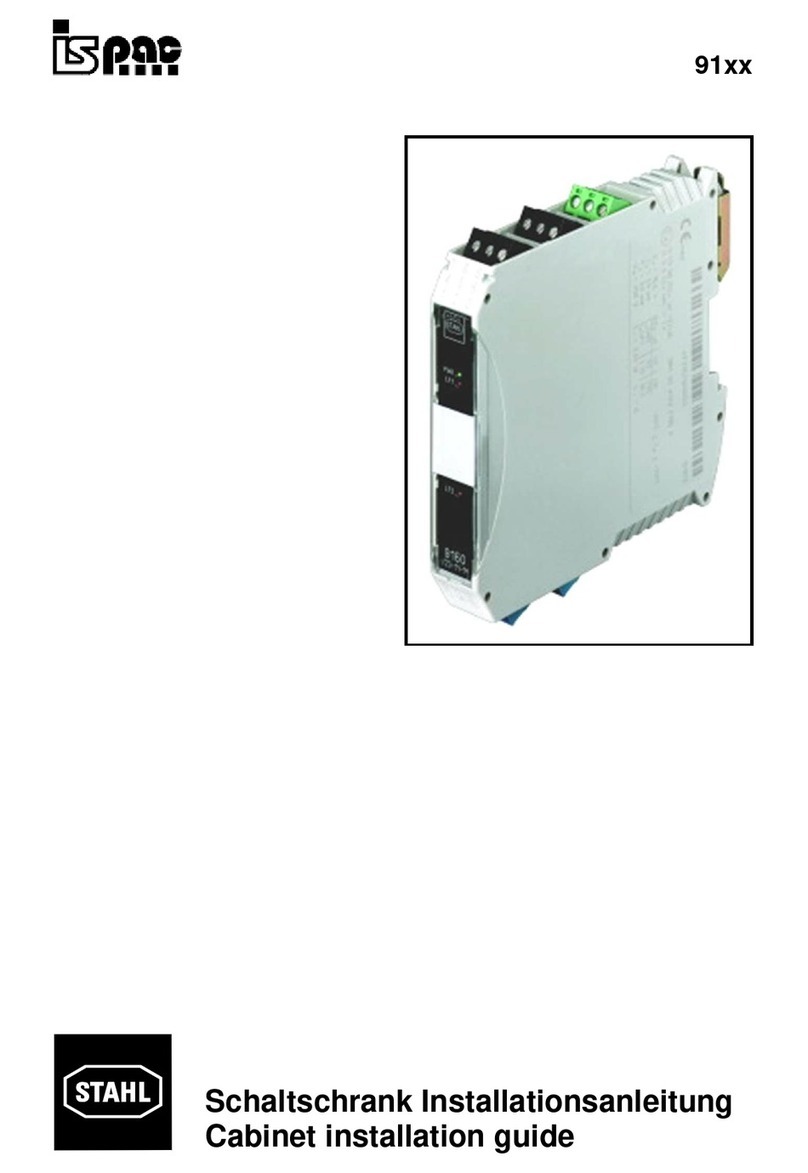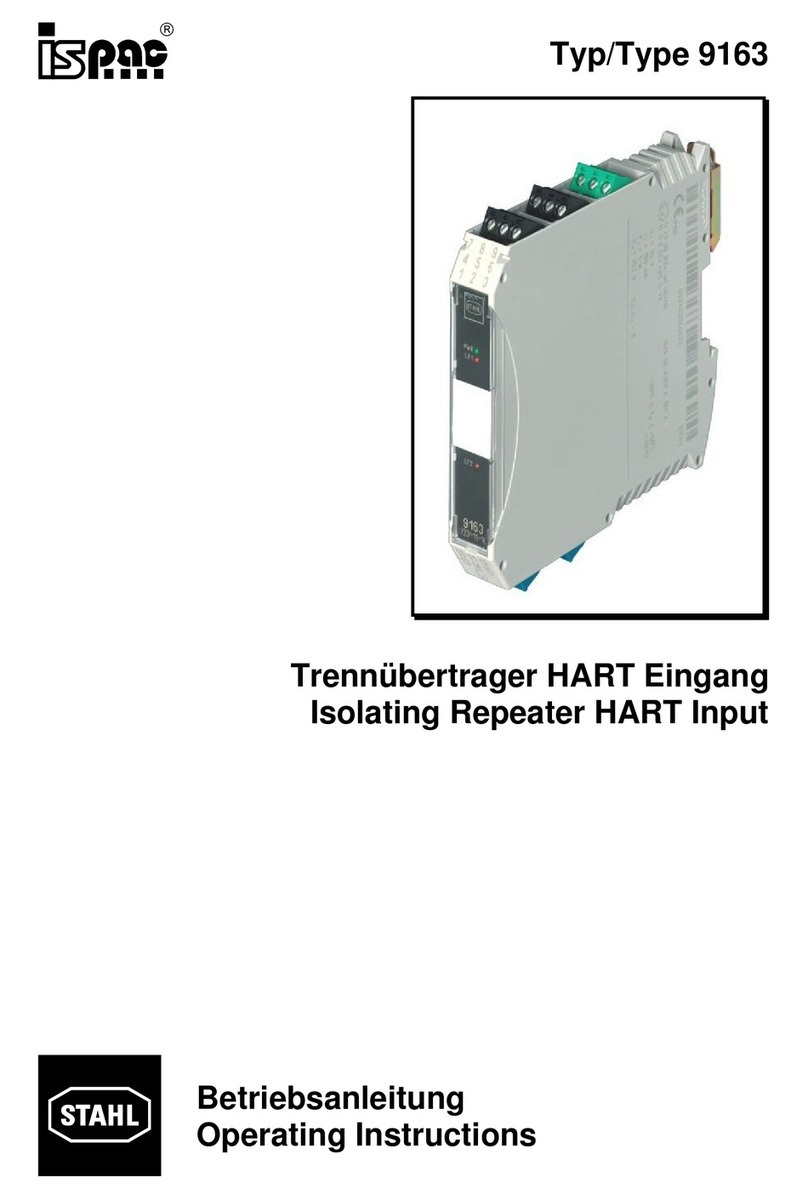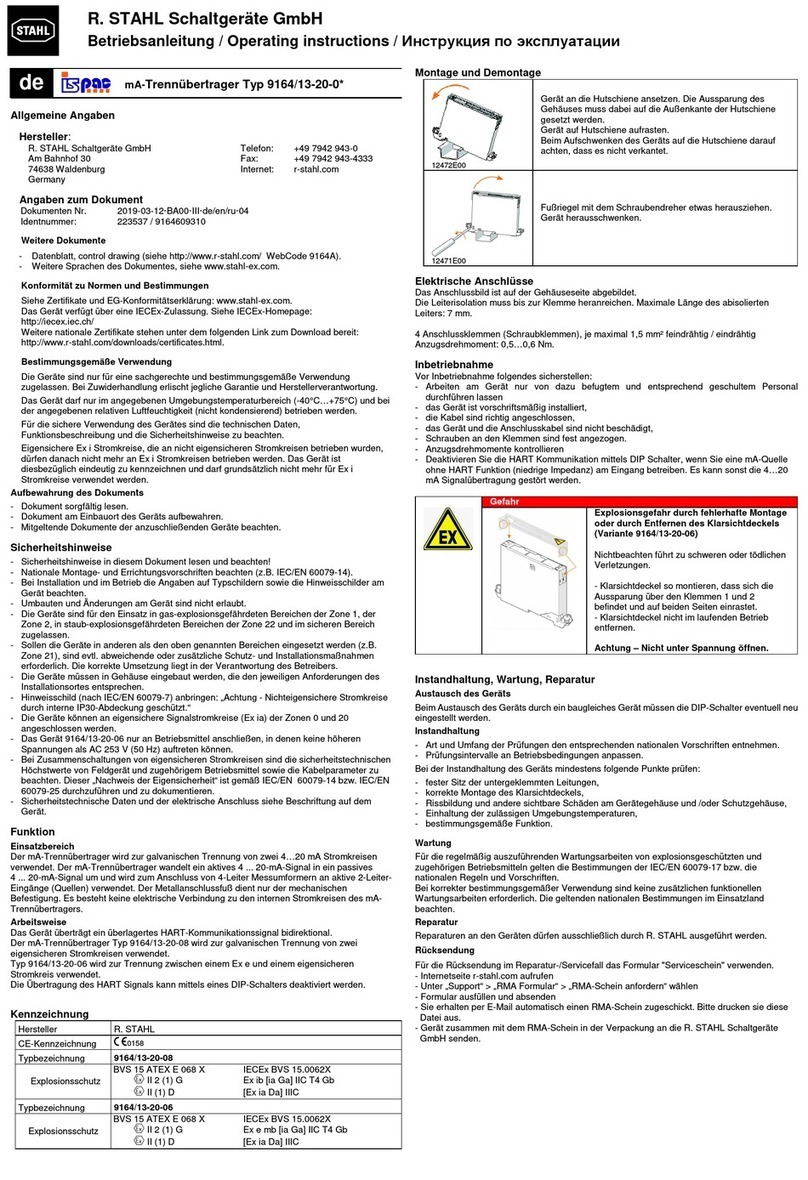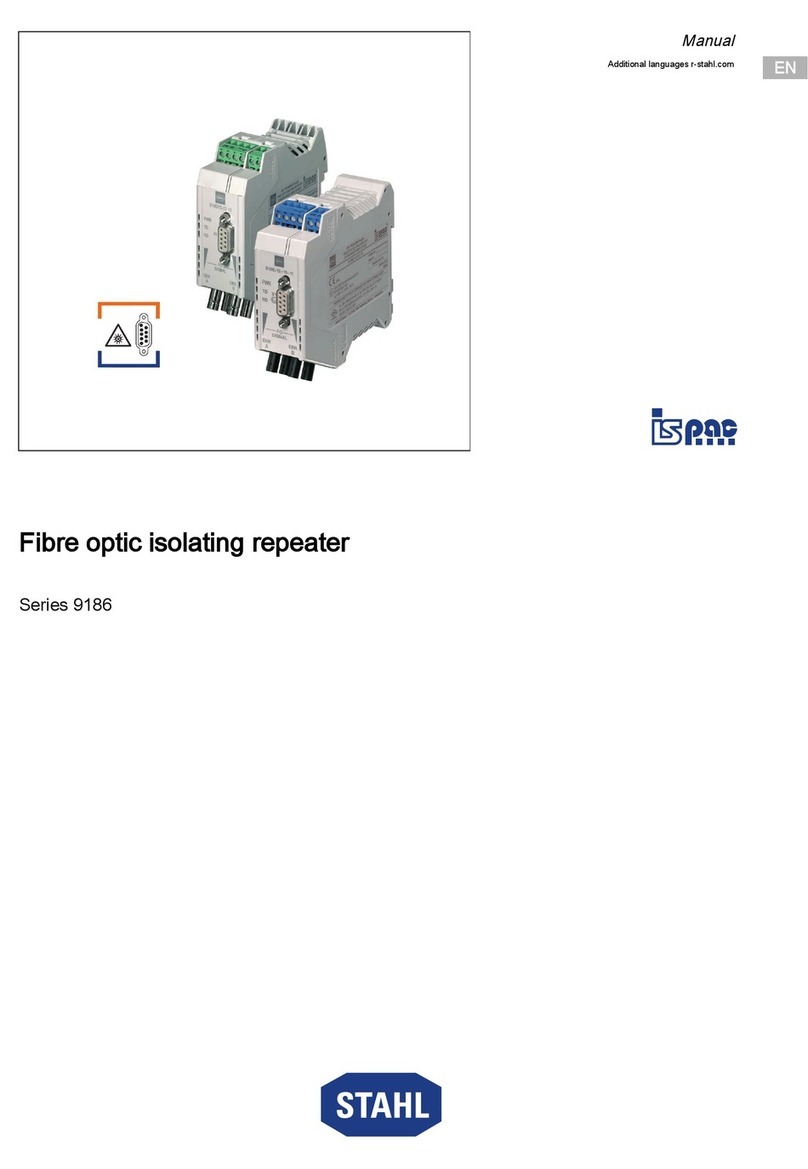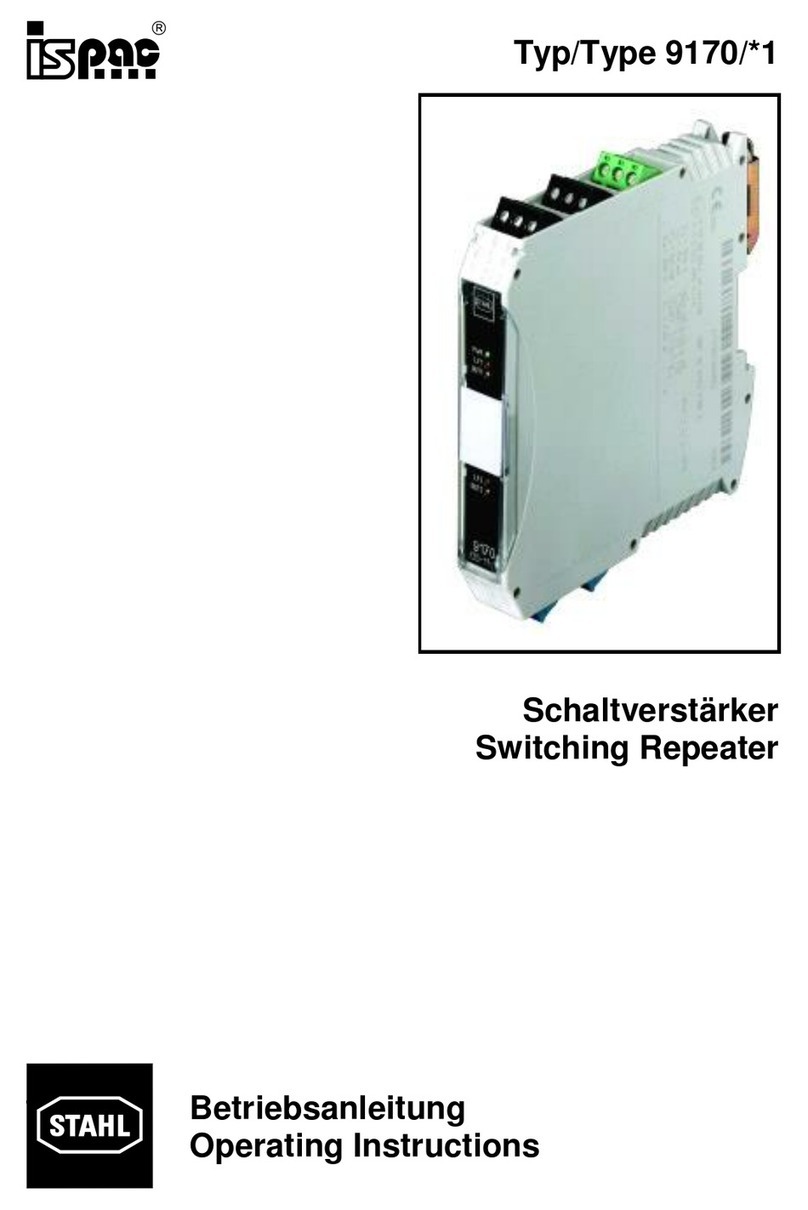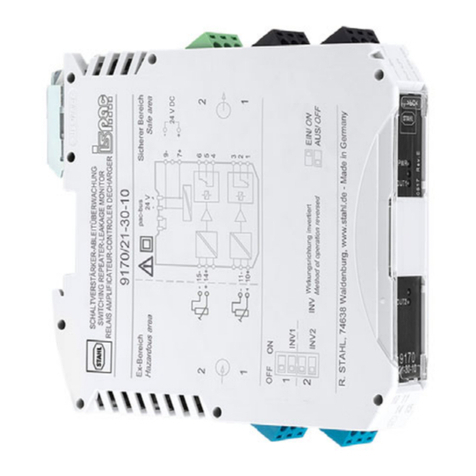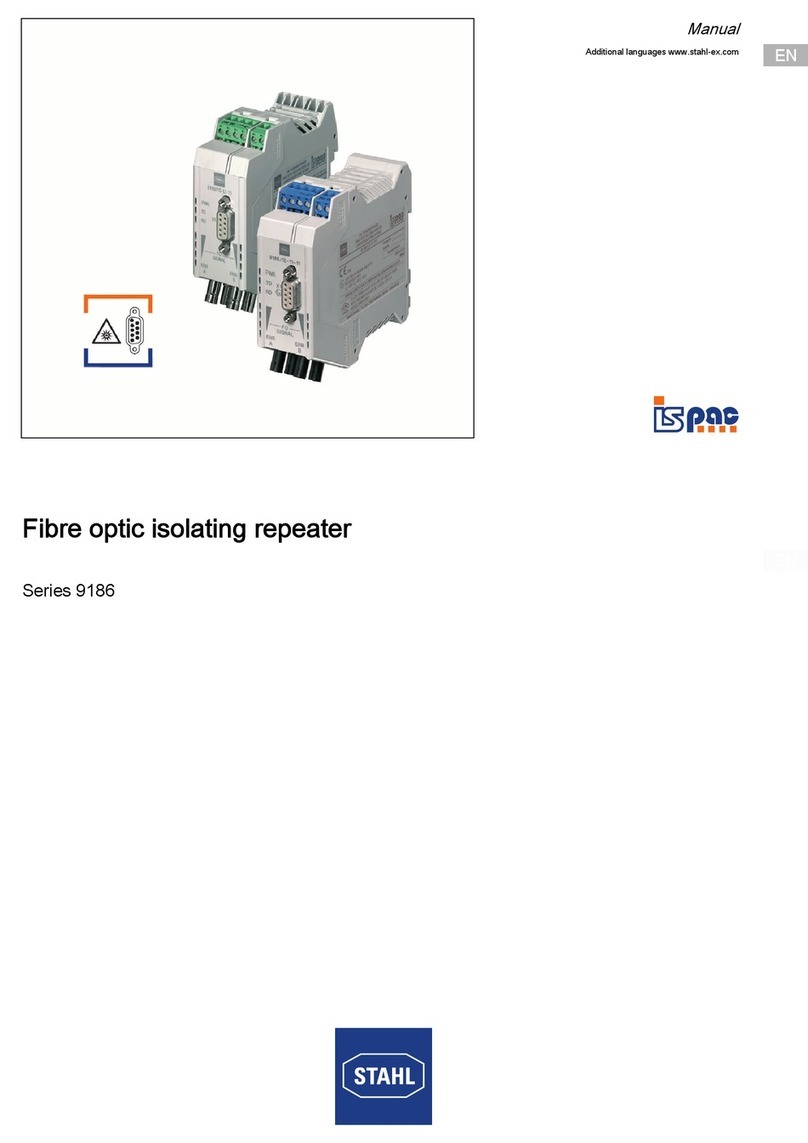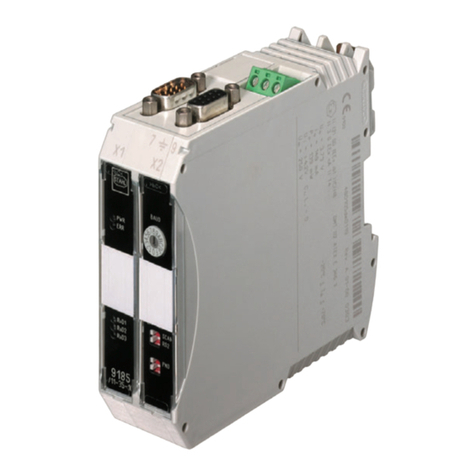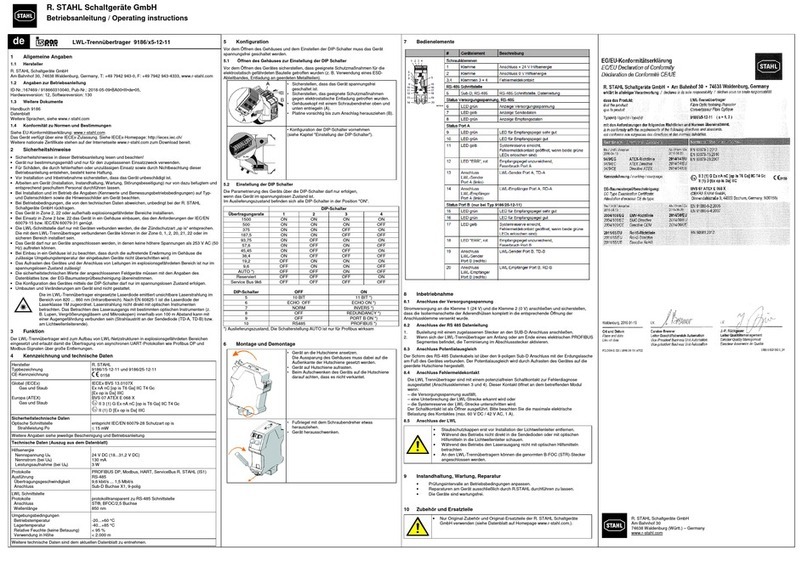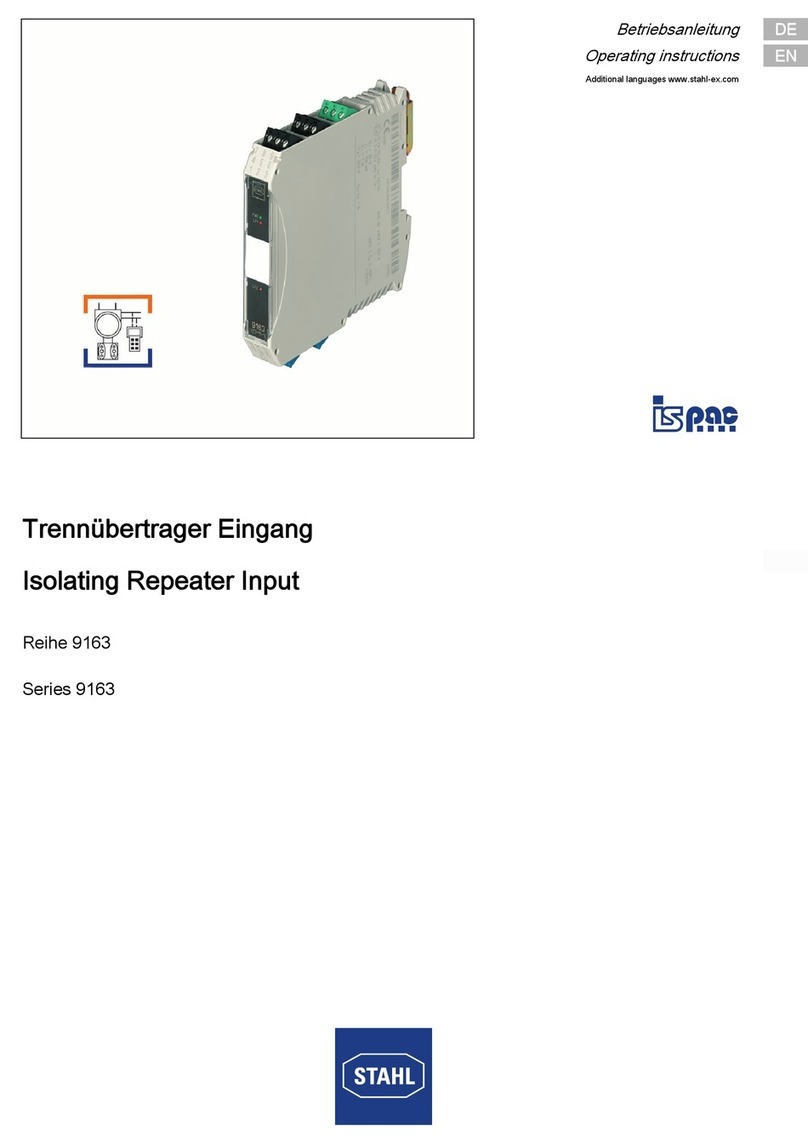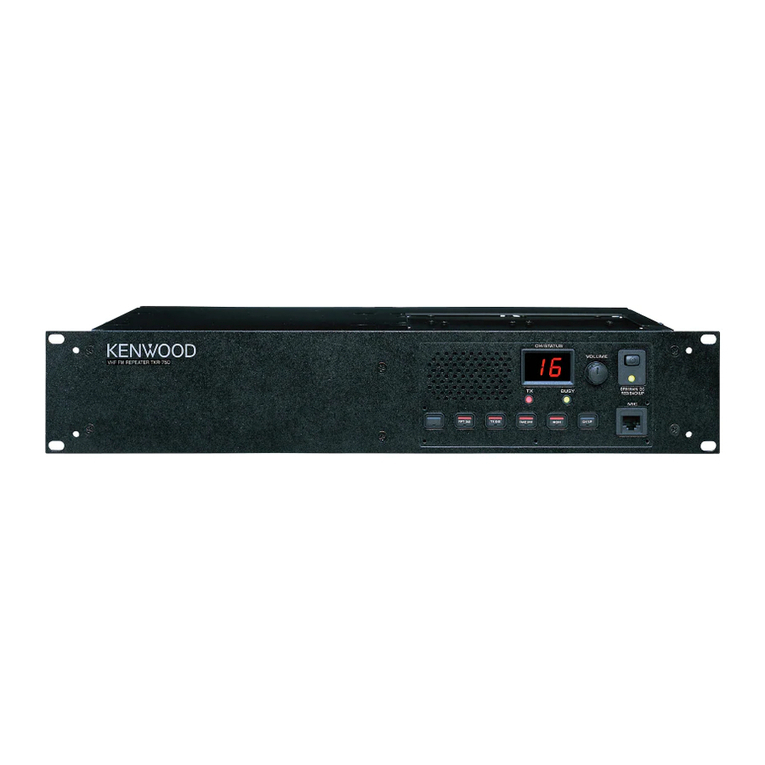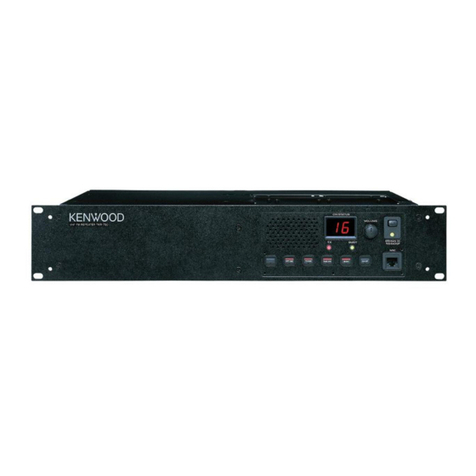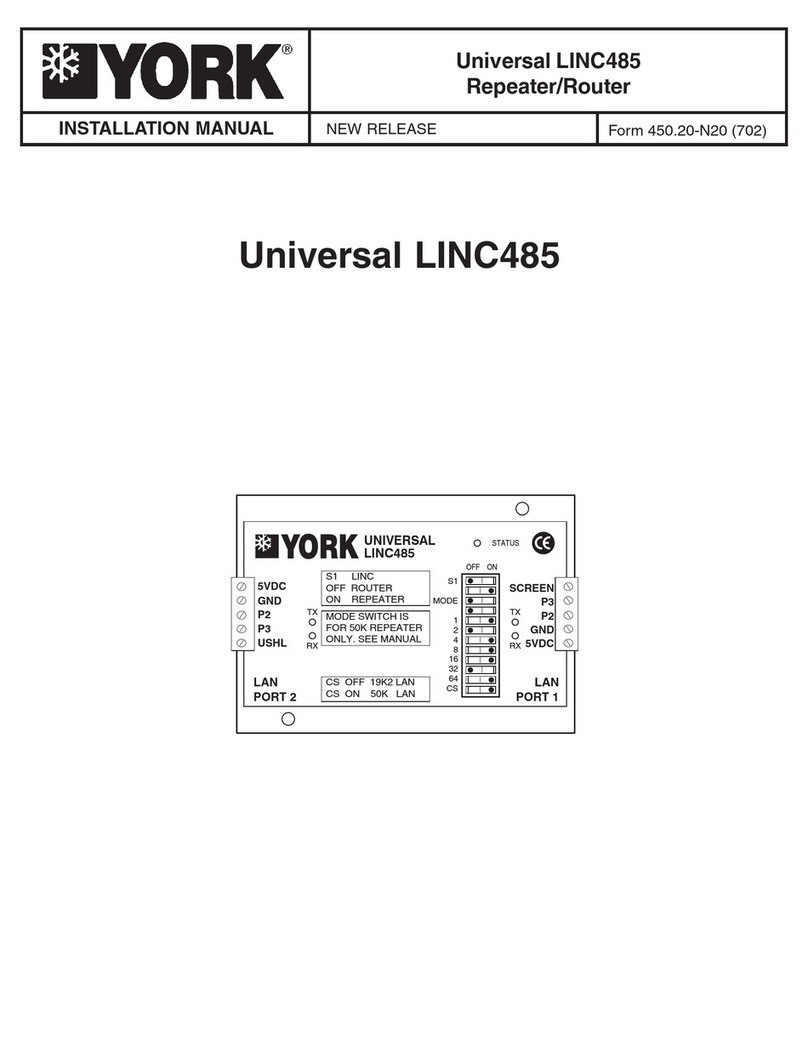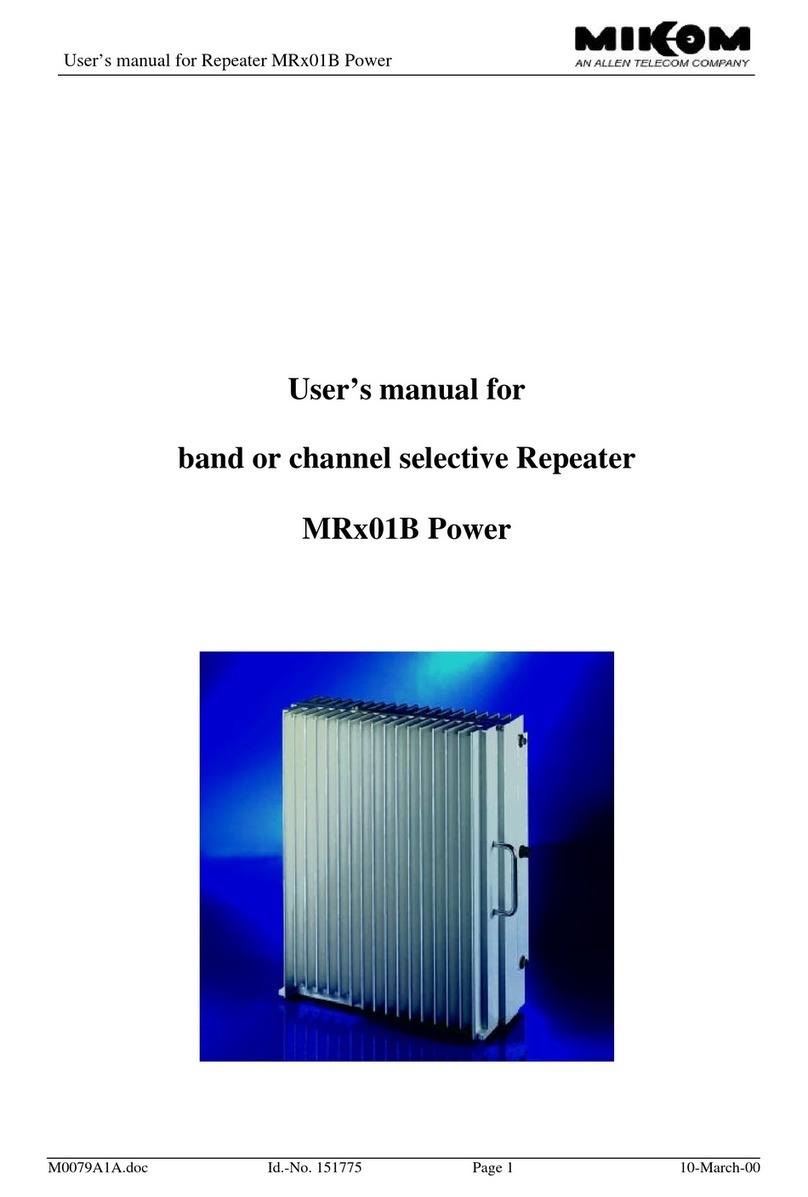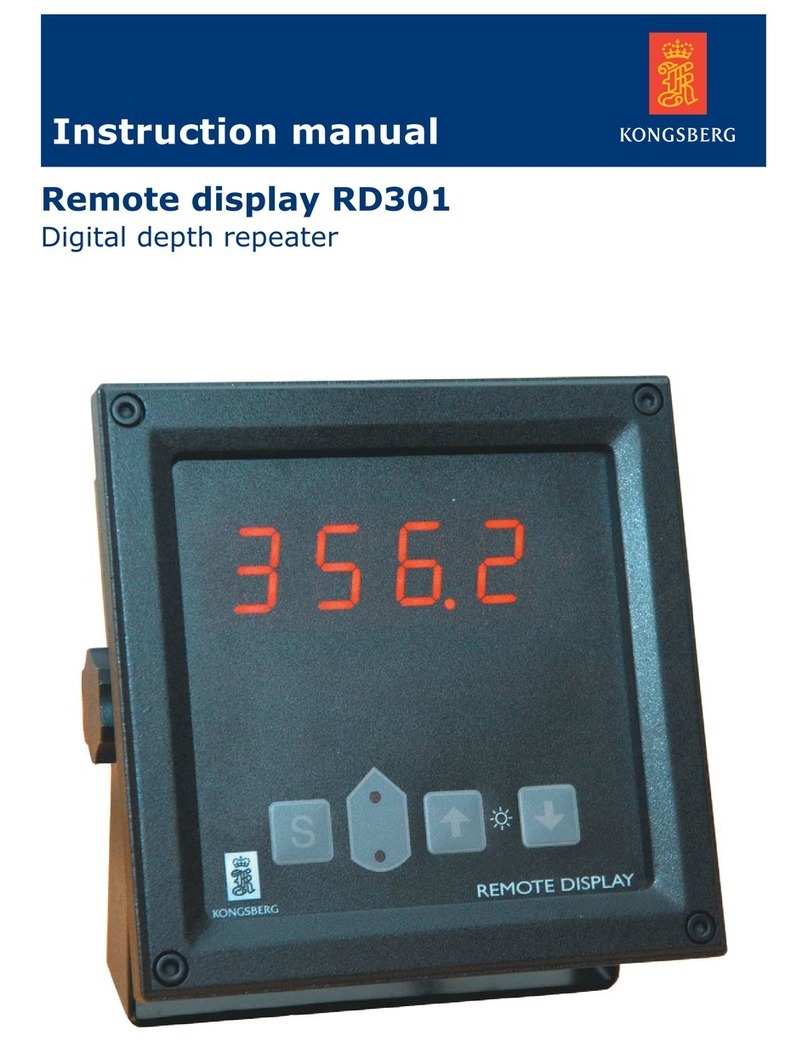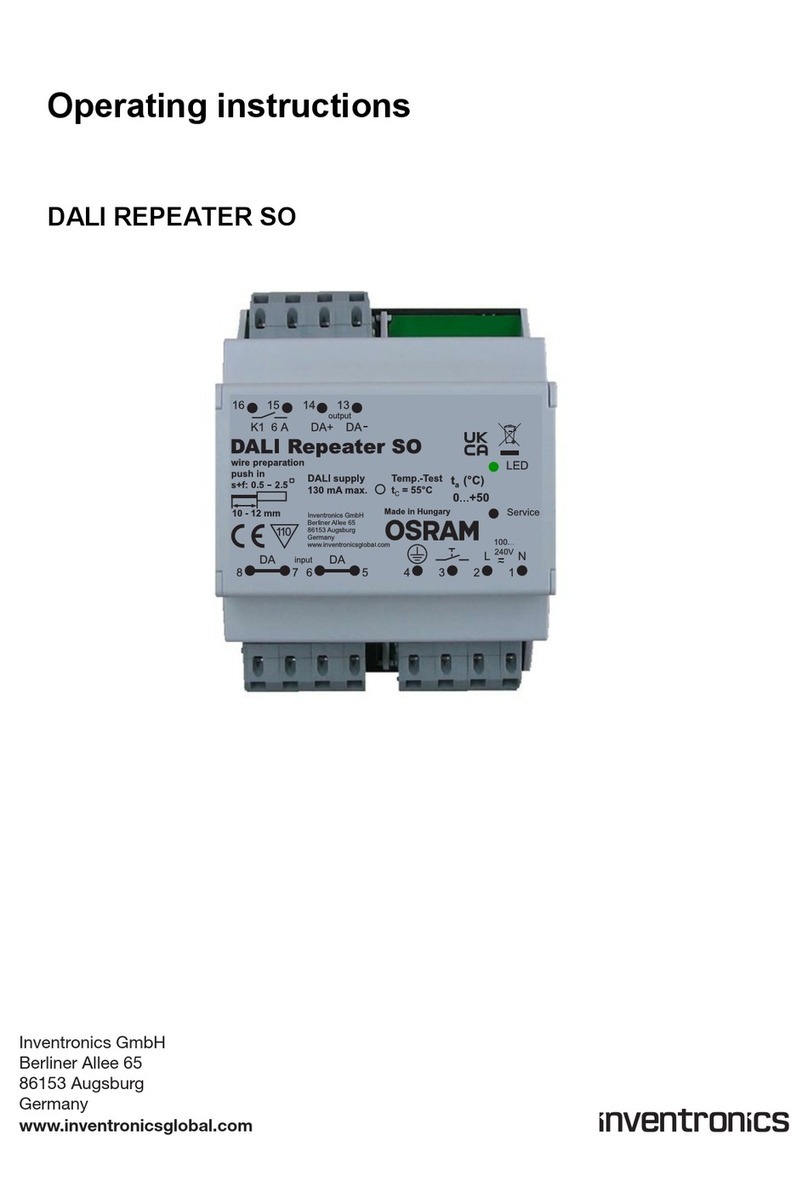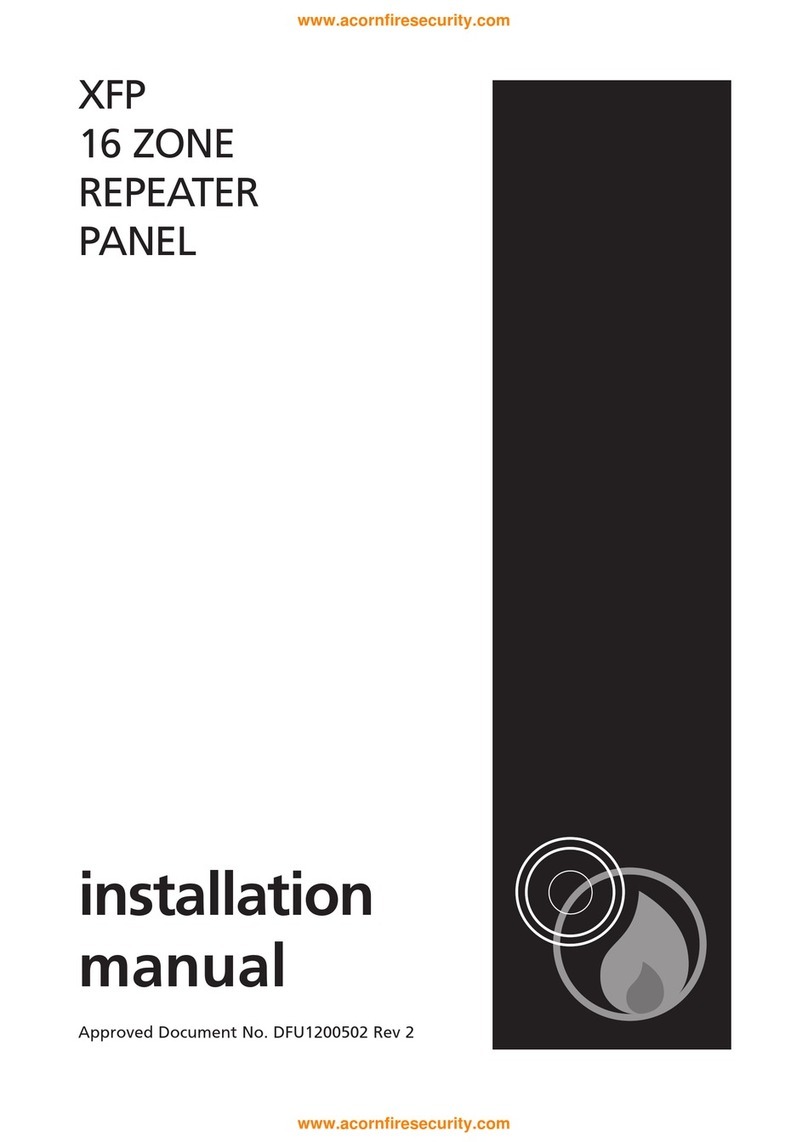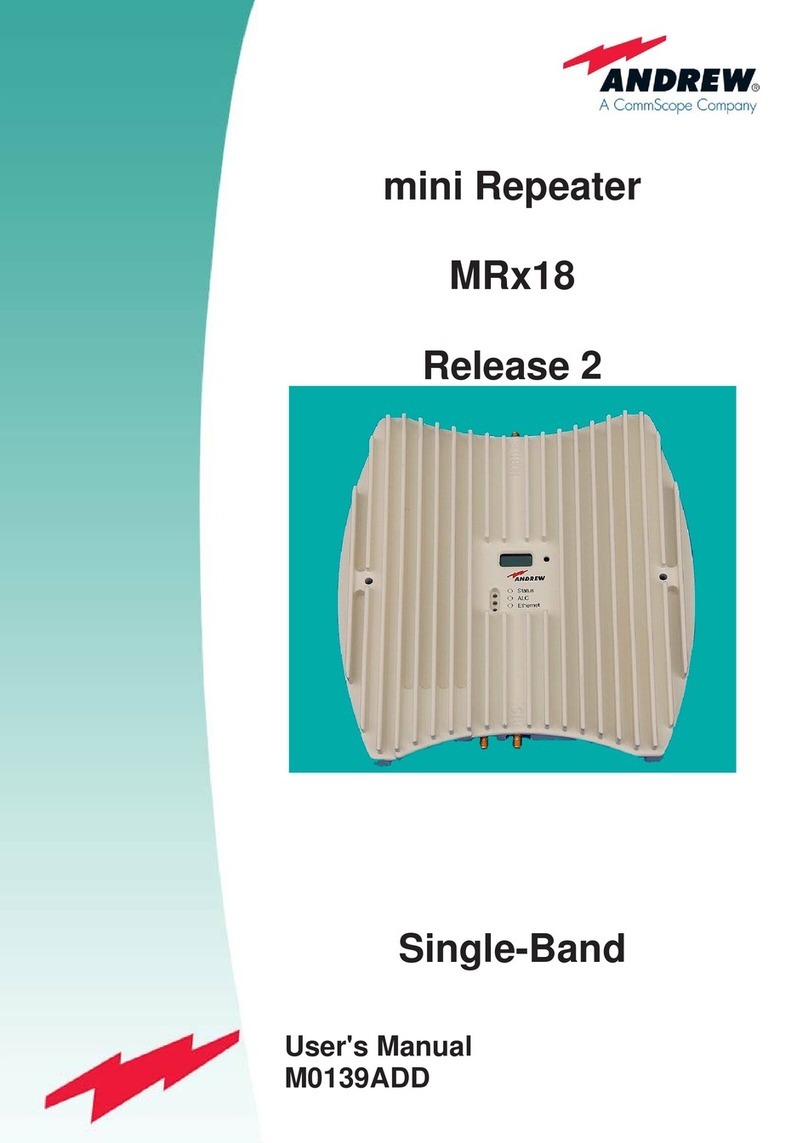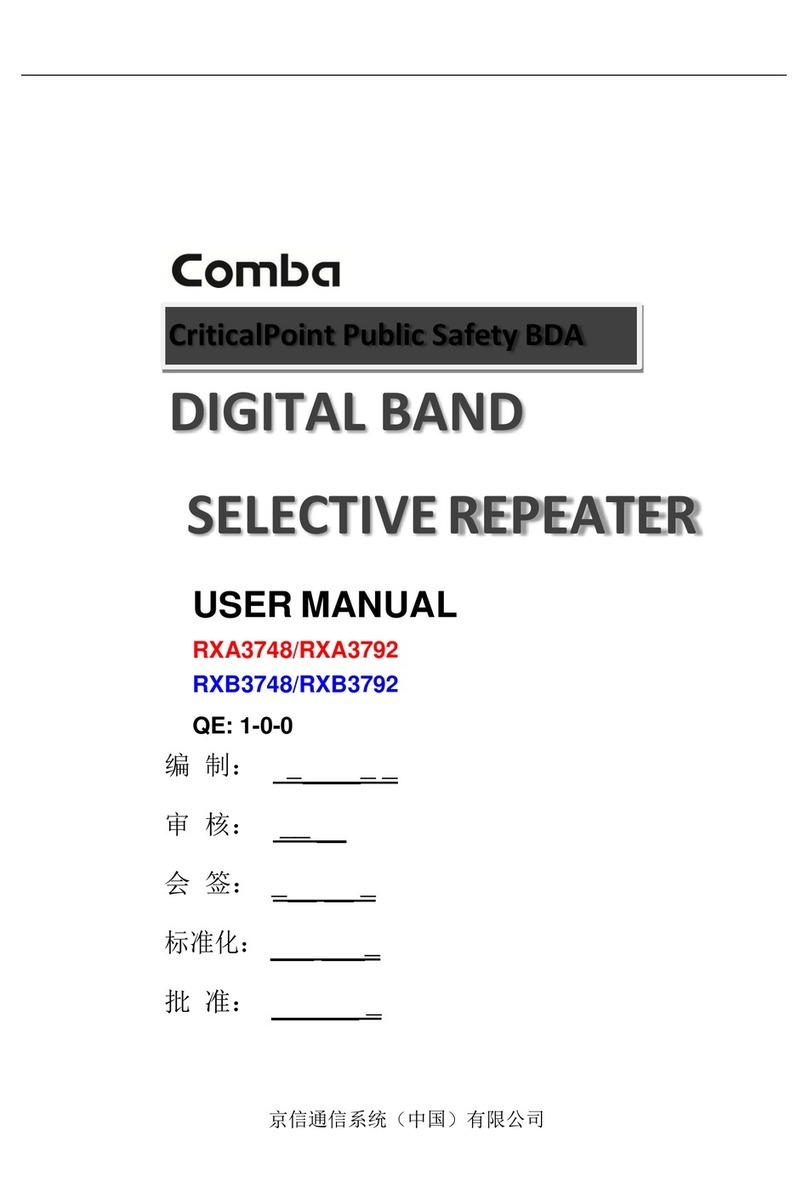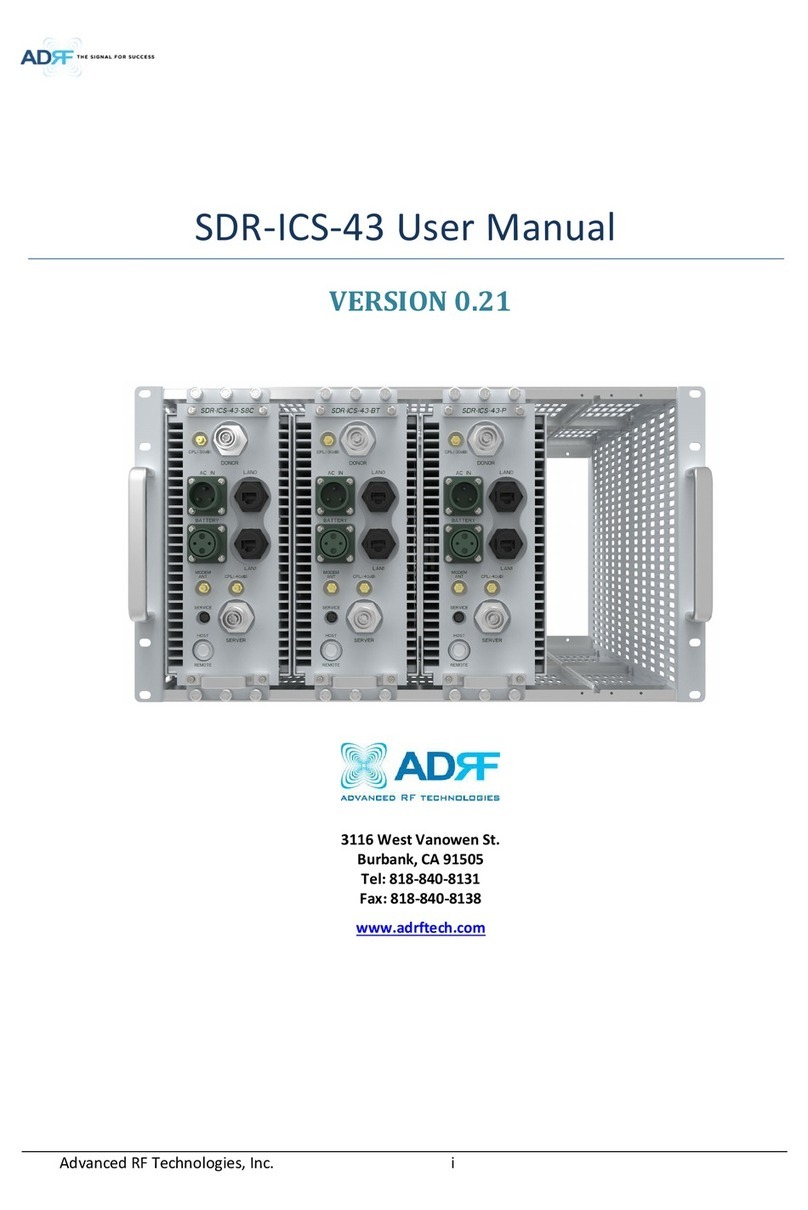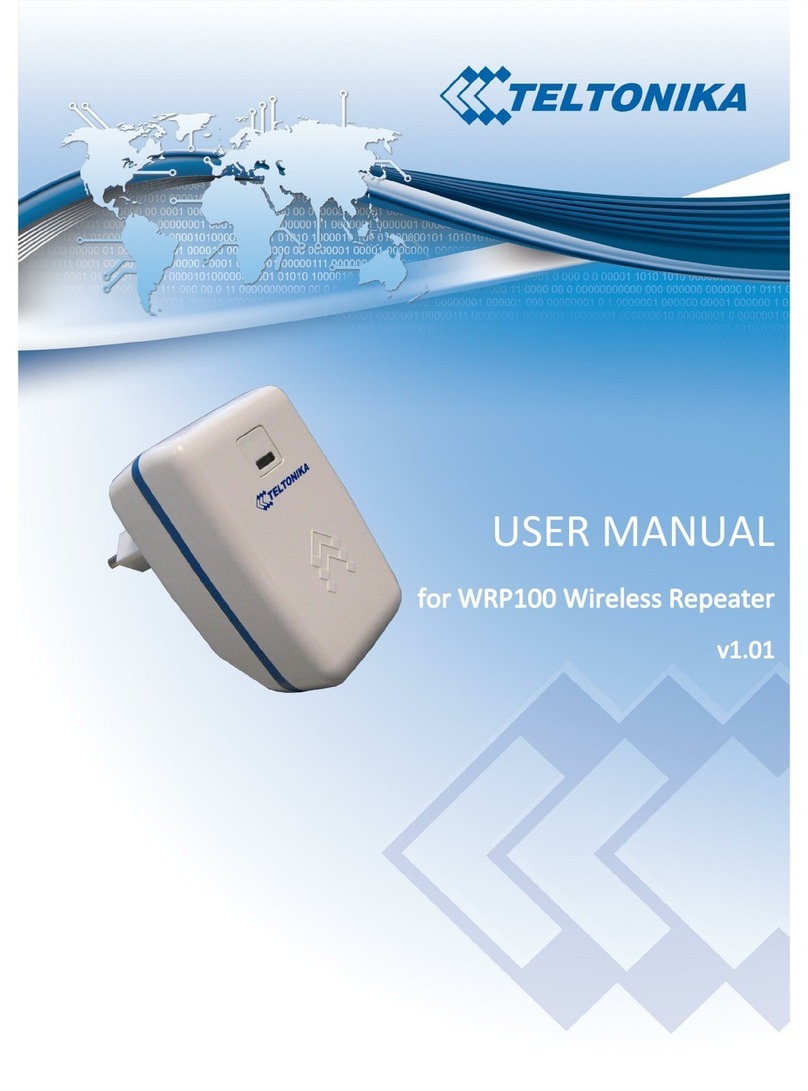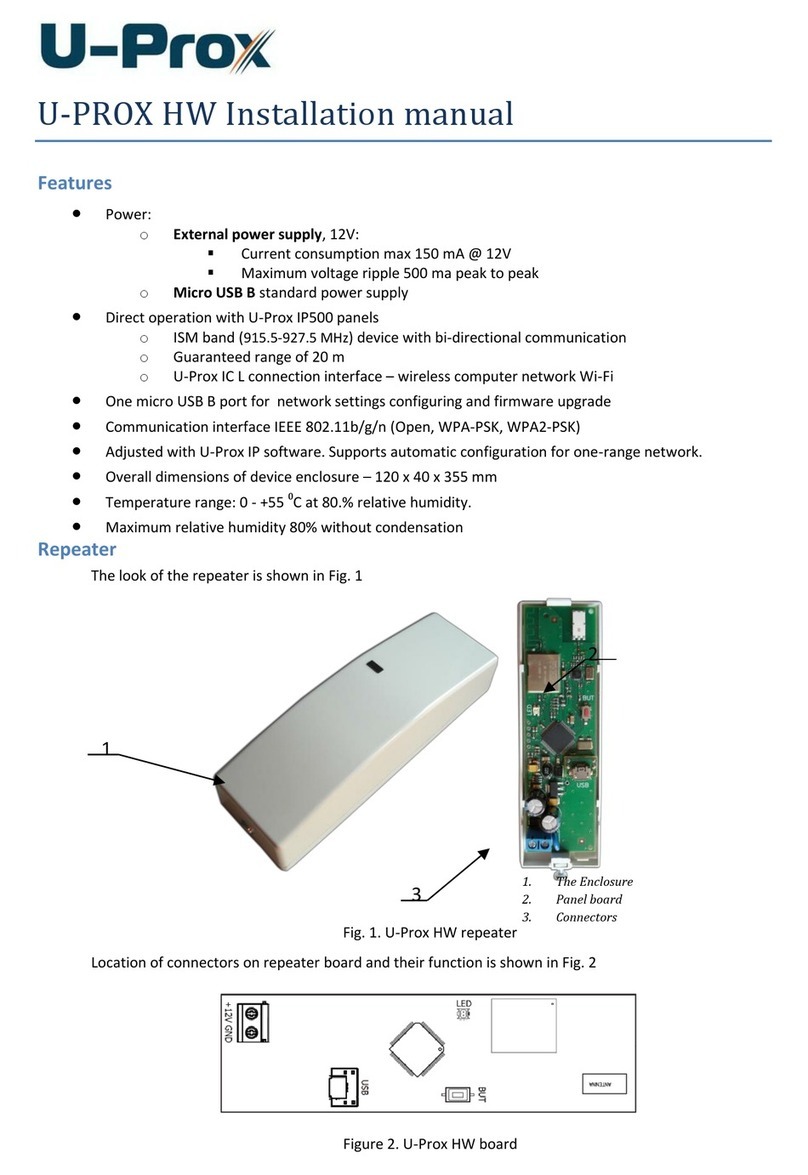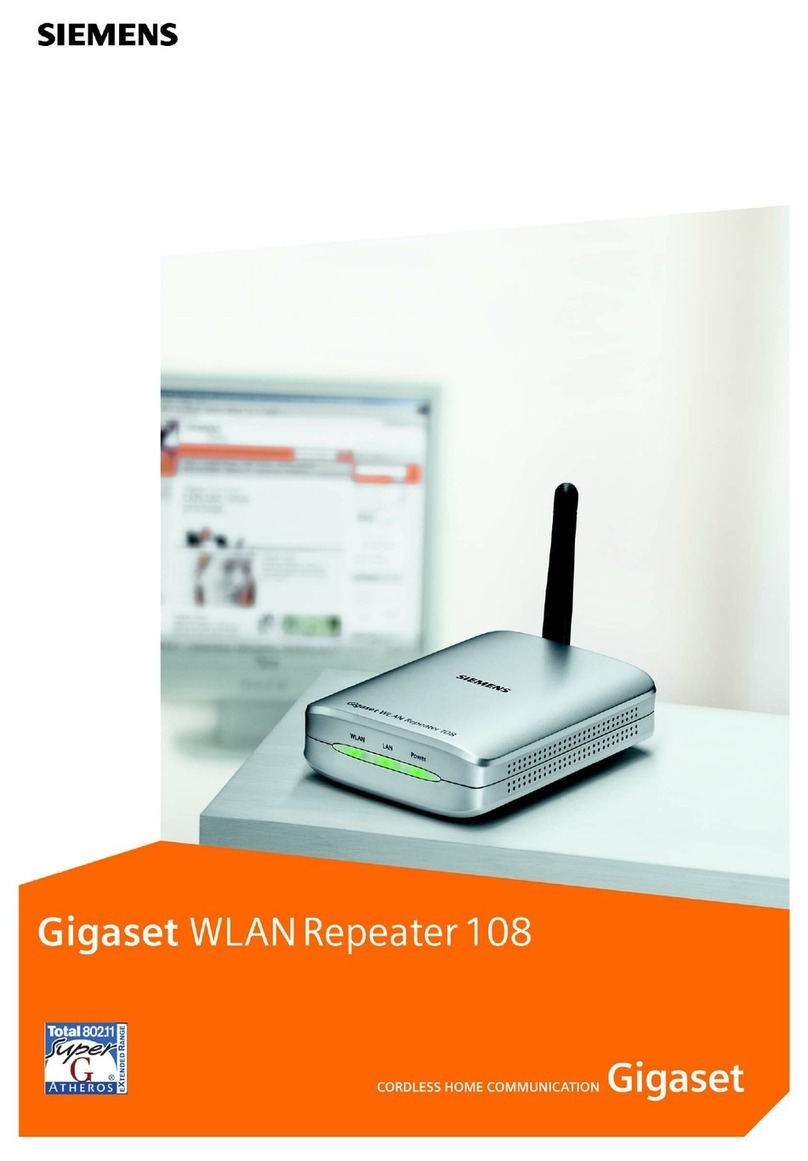english Operating Instructions
Switching Repeater Type 9170/*2
3
1 Safety instructions
The most important safety instructions are summarised in this chapter. It is intended to
supplement the relevant regulations which must be studied by the personnel responsible.
When working in hazardous areas, the safety of personnel and plant depends on
complying with all relevant safety regulations. Assembly and maintenance staff working on
installations therefore have a particular responsibility. The precondition for this is an
accurate knowledge of the applicable regulations and provisions.
When installing and operating the device in an ATEX environment, the following has
to be observed:
•The national installation and assembly regulations (e.g. EN 60079-14) apply.
•The switching repeater is to be installed outside of hazardous areas.
•The switching repeater has to be connected to the Ground / Potential equalization via
the pac-Bus, terminal 2 by means of a wire with a diameter of # 16 AWG.
•The switching repeaters may only be connected to devices which will not be subjected
to voltages higher than AC 253 V (50 Hz).
•The safe maximum values of the connected field device(s) must correspond to the
values of the data sheet or the EC-type examination certificate.
•Interconnecting several active devices in an intrinsic safety circuit may result in other
safe maximum values. This could endanger the intrinsic safety!
•National safety and accident prevention regulations.
•Generally recognised technical regulations.
•Safety guidelines in these operating instructions.
•Any damage can compromise and even neutralise the explosion protection.
The following requirements apply if used in an MSHA environment:
•The switching repeater must be located out-by in a suitable enclosure or installed
inside an MSHA certified X/P enclosure if located in an area where permissible
equipment is required
•The installation shall preclude intermingling between the intrinsically safe input circuits
and the non-intrinsically safe power and relay circuits.
•The input power voltage to the switching repeater must not exceed a maximum 150
Vac rms or 31 Vdc.
•The voltage switched by the output relays must not exceed 150 Vac rms or 150 Vdc
and the current switched shall not exceed 4 Aac rms or 2 Adc.
•Pole 2 of the pac-Bus 5 pole terminal must be connected to frame ground.
•The output relays contacts of a two output channel switching repeater must switch
power from the same power source.
•Connection of a capacitive, inductive or voltage generating device to the intrinsically
safe input Channels 1 and 2 must be evaluated before being accepted as part of a
permissible machine.
Use the device in accordance with the regulations and for its intended purpose only (see
“Function”).
Incorrect or impermissible use or non-compliance with these instructions invalidates our
warranty provision.
No changes to the devices or components impairing their explosion protection are
permitted. Further, the device may only be fitted if it is undamaged, dry and clean.
2 Conformity to standards
The switching repeaters type 9170 comply with the following standards and directives:
